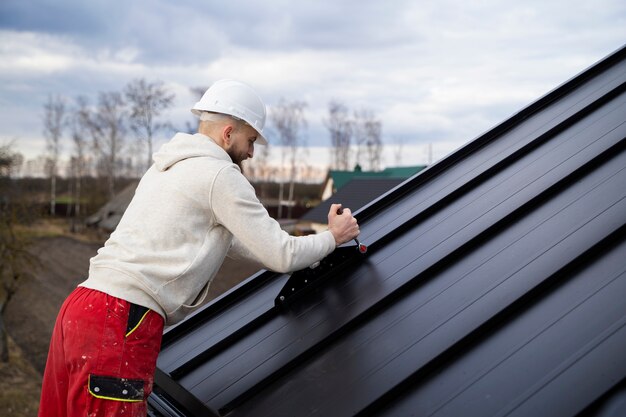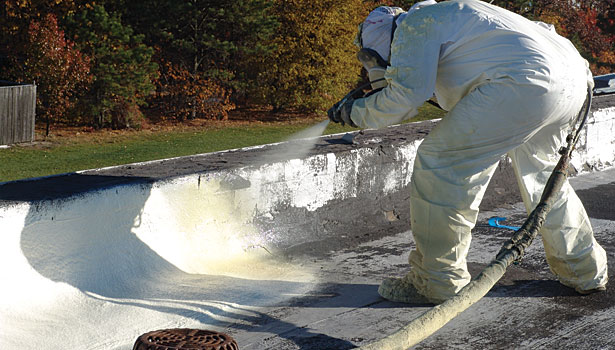A well-functioning attic ventilation system is a crucial component of a healthy and energy-efficient home. Proper ventilation helps regulate temperature, prevent moisture issues, and extend the lifespan of your roofing materials. In this guide, we’ll explore key considerations for roofers when upgrading an attic ventilation system to ensure optimal performance.
Table of Contents
1. Assessing Current Ventilation Needs
Before embarking on an attic ventilation upgrade, roofers should conduct a thorough assessment of the current ventilation needs. Consider factors such as the attic’s size, the type of roofing material, and the local climate. Identifying the specific requirements of the attic space lays the foundation for an effective ventilation system.
2. Understanding Ventilation Types
There are various types of attic ventilation systems, including ridge vents, soffit vents, gable vents, and powered attic fans. Etobicoke Roofers should understand the benefits and limitations of each type. Ridge and soffit vents, for example, work together to create a natural convection process, while powered attic fans enhance airflow. Choosing the right combination depends on the attic’s layout and the desired ventilation goals.
3. Calculating Ventilation Requirements
Proper attic ventilation is not a one-size-fits-all solution. Roofers need to calculate the ventilation requirements based on the attic’s square footage. The general rule of thumb is to have at least 1 square foot of ventilation for every 300 square feet of attic space. This calculation ensures sufficient airflow without over-ventilating, which can lead to energy inefficiency.

4. Balancing Intake and Exhaust Ventilation
A successful Etobicoke Attic Ventilation system maintains a balance between intake and exhaust. Roofers should ensure that there are enough intake vents, usually located along the soffits or eaves, and exhaust vents, such as ridge vents or gable vents. This balance facilitates proper air circulation, preventing issues like heat buildup and moisture accumulation.
5. Considering Climate Factors
Climate plays a significant role in attic ventilation. Roofers should take into account the local climate conditions, including temperature extremes and humidity levels. In hot climates, emphasis should be on maximizing airflow to prevent heat buildup, while in cold climates, preventing condensation and ice dam formation becomes a priority.
6. Addressing Moisture Concerns
Moisture poses a common threat in attics, fostering mold growth and potential structural damage. Roofers should prioritize ventilation solutions that effectively address moisture concerns. This may involve incorporating features like vapour barriers to prevent moisture from entering the attic and ensuring proper insulation to minimize condensation. By implementing these measures, roofers create a protective barrier against moisture-related issues, contributing to the longevity and health of the roofing system. A proactive approach to moisture management safeguards not only the structural integrity of the roof but also the overall indoor air quality, ensuring a healthy and resilient attic environment.
7. Installing Ridge Vents for Effective Exhaust
Ridge vents are a popular choice for providing continuous exhaust along the peak of the roof. Roofers should pay attention to proper installation techniques, ensuring that the ridge vent is centred and runs the full length of the roof. Adequate insulation baffles should be installed to prevent insulation blockage and maintain a clear airflow path.
8. Optimizing Soffit Ventilation
Soffit vents play a crucial role in facilitating the inflow of fresh air into the attic, contributing to a well-ventilated and healthy roof system. Roofers should prioritize ensuring that soffit vents remain unobstructed and evenly distributed along the eaves. Proper installation and regular maintenance of these vents are paramount for the efficiency of the entire attic ventilation system. By upholding the integrity of soffit vents, roofers enhance the overall performance of the roofing structure, preventing issues related to moisture buildup, heat retention, and potential damage. This attention to ventilation promotes a durable and well-functioning roofing system.
9. Integrating Attic Fans for Enhanced Ventilation
Incorporating attic fans can be a valuable enhancement for ventilation, particularly in regions with stagnant air or during periods of intense heat. Roofers should carefully evaluate the attic’s size and airflow patterns before recommending and installing attic fans. The objective is to supplement natural convection without creating an imbalance in the ventilation system. Strategically placed attic fans contribute to better air circulation, helping regulate temperature and moisture levels. This thoughtful addition supports the overall health of the roofing structure, preventing issues such as heat buildup and excessive humidity that can compromise the integrity of the roof and the items stored in the attic.
10. Educating Homeowners on Maintenance
Roofers should educate homeowners on the importance of regular maintenance for the attic ventilation system. This includes clearing debris from vents, inspecting for signs of damage, and ensuring that insulation is not blocking airflow. Regular inspections and maintenance routines empower homeowners to identify and address potential issues promptly.
Conclusion
Upgrading an attic ventilation system requires a thoughtful and comprehensive approach from roofers. By assessing current needs, understanding ventilation types, and calculating requirements, roofers can tailor solutions to the specific characteristics of each attic. Balancing intake and exhaust, considering climate factors, and addressing moisture concerns contribute to the overall effectiveness of the ventilation system. Through proper installation and maintenance, roofers play a pivotal role in ensuring that homes have efficient and reliable attic ventilation, promoting a healthy and sustainable living environment.




